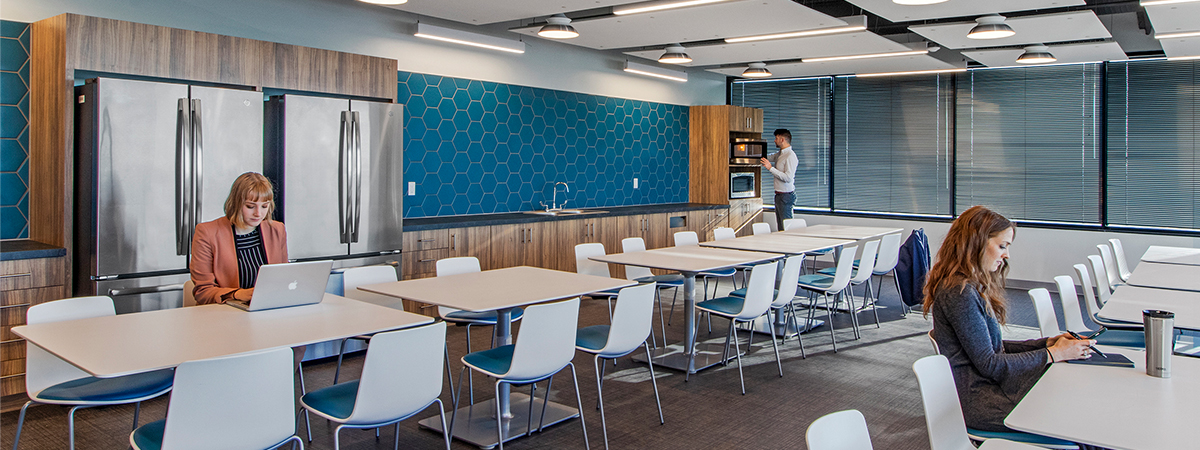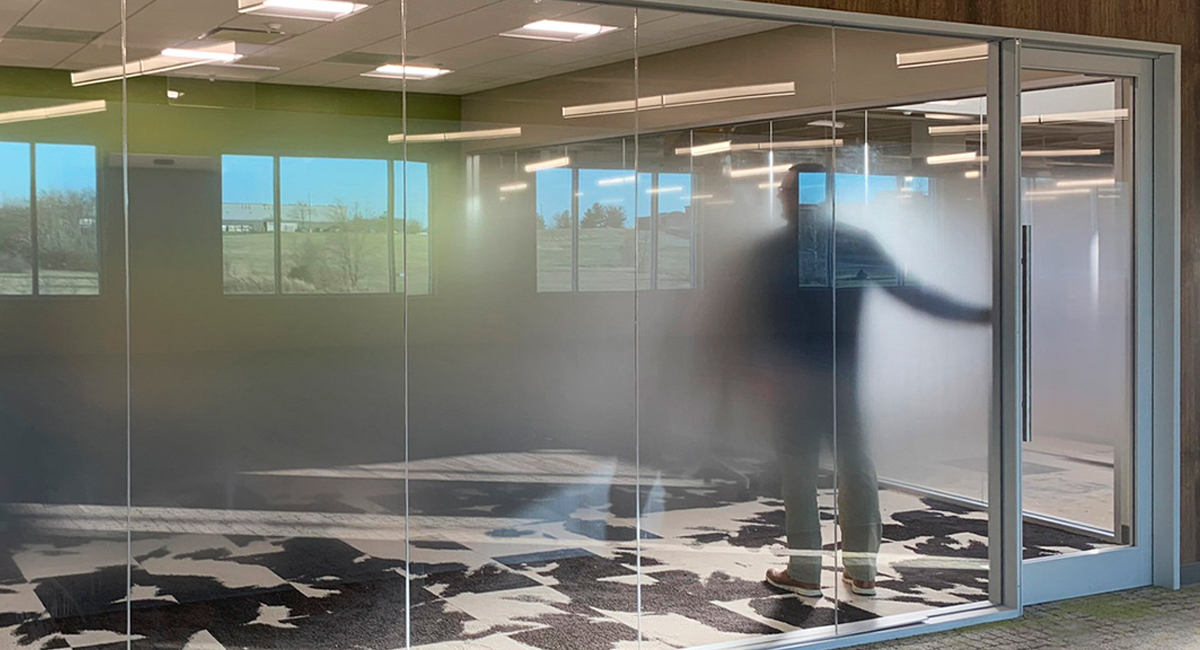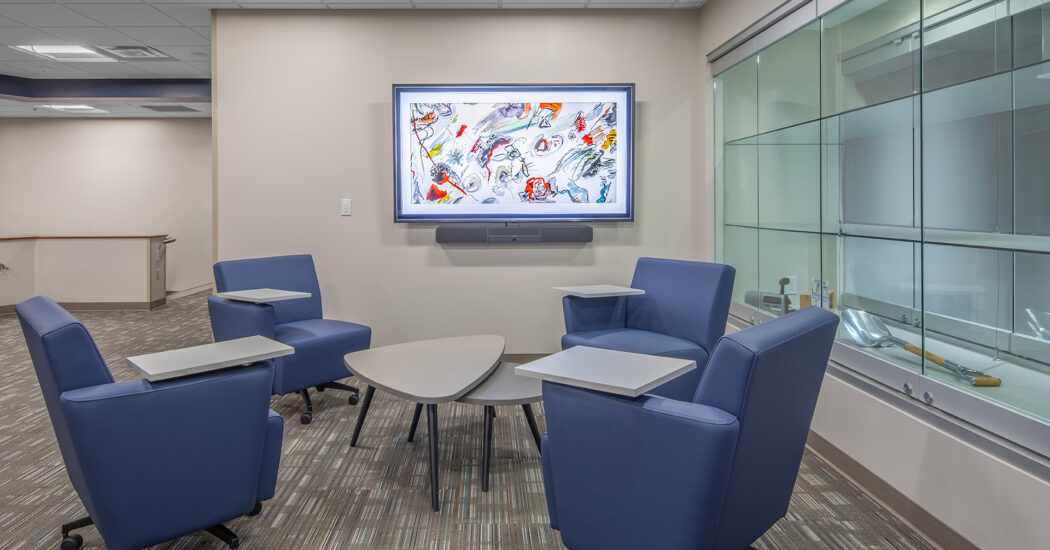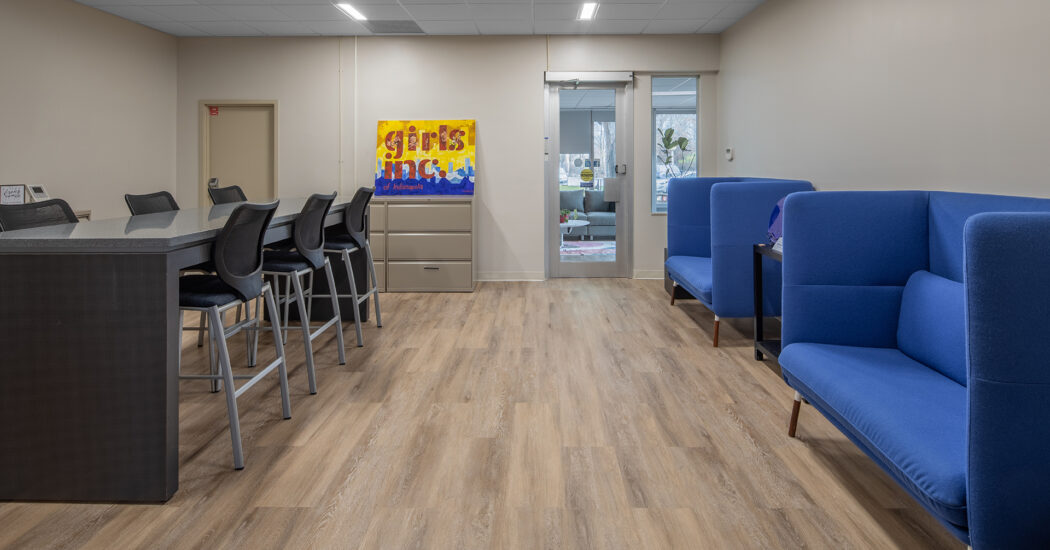5 Changes to Make Before Employees Return to the Office
-
Category
Studio-Workplace -
Posted By
Dan Billings -
Posted On
Apr 22, 2020

Wiley Indianapolis Office Cafeteria
The COVID-19 pandemic has changed life as we know it. Your employees have likely been forced from their cubicles or standing desks into their dining rooms or home offices. Virtual-only interaction with their colleagues and clients is the new norm. This will inevitably cause significant shifts in how we think about the physical workplace and how we as designers approach office spaces in the future.
But what about right now? How do you prepare for the eventual return to the office in the coming weeks? How can you reduce the spread of pathogens and ease employees’ minds?
Every organization’s team, work environment, and risk factors are different. Thus, the way you adapt to the post-quarantine working world will vary. However, there are some practices that can be utilized across many types of corporate settings. As always, refer to CDC, OSHA, and other trusted organizations for specific guidelines.
Below are five changes you can make before employees return to the office:
1. Increase space between workstations and employees.
We know that social distancing is key to preventing the spread of COVID-19, and it will continue to be critical even after “shelter in place” orders are lifted. After weeks or months in quarantine, employees will be very cognizant of their proximity to their coworkers when they come back to work. Your office layout and practices must make it possible for employees to continue to social distance.
You can do this by:
- Increasing space between chairs in lobbies, break areas, collaboration spaces, and workstations
- Reducing the number of chairs in conference rooms and limiting the size of any necessary in-person meetings; post signage in meeting spaces with this information
- Limiting occupancy in elevators and encouraging use of the stairs for those who are able
2. Consider a staggered work schedule.
Ensuring adequate social distancing may mean that you simply cannot allow all employees to be in the office at the same time. Staggering work schedules is one way to reintroduce teams into the physical workplace while also increasing space.
This could mean adjusting hours and allowing employees to work in shifts. It could also mean staggering in-office days so that some employees come to the office while others work from home on a given day.
Of course, any employees who are feeling sick, suspect they have been exposed to COVID-19, or are caring for or living with someone who has tested positive or suspects they have COVID-19 should stay home.

Farm Credit Mid-America Louisville Conference Room
3. Adjust HVAC to improve indoor air quality.
Adequate ventilation and a properly maintained HVAC system are key to the health of your workplace. If your office has been closed for several weeks or months, do a thorough check to ensure your systems are working properly. Perform any needed system maintenance, such as replacing air filters; and make sure your exhaust fan is running.
Before your office opens again, consider “flushing” your building by setting outdoor air levels as high as 100%. This allows the system to replace all the indoor air with fresh outdoor air, removing any potential pathogens or contaminants.
Increase the ratio of outdoor air being brought into the building on a daily basis. If you have a demand-controlled ventilation (DCV) system, turn it off.
Learn more about using your HVAC system to keep your building healthy.
4. Continue emphasizing good hygiene—and make it easy.
Good handwashing and other preventative behaviors are widely known at this point. But when transitioning back to everyday life, it will be easy to slip back into our normal habits. Continue to emphasize the importance of good hygiene and make it easy for employees to practice it by:
- Adding hand sanitizer dispensers in lobbies, waiting areas, meeting rooms, and all public spaces.
- Encouraging employees to avoid shaking hands or hugging.
- Installing handwashing signs and behavioral reminders, such as to cover coughs with your elbow.
- Replacing manual soap and paper towel dispensers in bathrooms, kitchen areas, or cafeterias with automatic, no-touch dispensers if possible.
5. Increase building sanitization practices.
Be sure to ramp up office cleaning practices when you return. This includes by your cleaning crew and your employees.
Talk with your cleaning crew about regular disinfecting of frequently touched surfaces. You may need to request they increase the scope of their services to encompass more deep cleaning efforts. Also consider increasing cleaning frequency.
Place disinfecting wipe or spray stations throughout the office. Encourage employees to frequently clean their workspaces and to wipe down meeting areas when they are finished. Also remind them to frequently clean their cell phones, desk phones, keyboards, key cards or fobs, and other frequently touched items.
If your office employs “hot desking,” in which employees float between desks and do not have assigned seating, consider temporarily halting this practice to minimize cross contamination. If that is not possible, be especially diligent about workspace cleaning practices.
Most importantly, communicate the steps you are taking to protect employees. If they are aware of and understand what is being done to improve health and safety practices, they will feel more comfortable when returning to the office.







